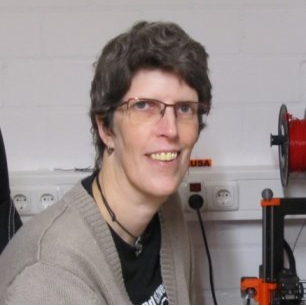Nanofibrous Membrane for Biomedical, Environmental and Energy Application
A special issue of Membranes (ISSN 2077-0375). This special issue belongs to the section "Polymeric Membranes".
Deadline for manuscript submissions: 30 April 2024 | Viewed by 5872
Special Issue Editor
Interests: biopolymers; electrospinning; magnetism; spintronics; optics; dye-sensitized solar cells (DSSCs); smart textiles
Special Issues, Collections and Topics in MDPI journals
Special Issue Information
Dear Colleagues,
Electrospinning can be used to prepare nanofibrous membranes from diverse polymers, polymer blends or even non-polymeric materials. The large surface-to-volume ratio and the porous structure make them suitable for diverse fields of applications, from filters to catalysts to tissue engineering.
Here, we are looking for recent developments of nanofiber mats for biomedicine, environmental or energy applications, etc. From wound healing to slow release, and from tissue engineering to stem cell differentiation, nanofibrous membranes can be found in a broad range of biomedical applications. They are used as filters for gases and liquids, in supercapacitors, solar cells and batteries, as well as other related applications. For these purposes, their chemical as well as physical properties are important, such as their hydrophobicity, fiber morphology, membrane porosity and pore size distribution, mechanical strength, optical properties, etc. For some applications, they must be electrically conductive, translucent, heat-resistant, or have other specific physical properties.
This Special Issue focuses on nanofibrous membranes for biomedical, environmental and energy applications as well as related areas, measuring and optimizing the corresponding membrane properties. It covers the full range of the topic from basic research on new materials and the production of novel electrospun structures to new or advanced applications.
Prof. Dr. Andrea Ehrmann
Guest Editor
Manuscript Submission Information
Manuscripts should be submitted online at www.mdpi.com by registering and logging in to this website. Once you are registered, click here to go to the submission form. Manuscripts can be submitted until the deadline. All submissions that pass pre-check are peer-reviewed. Accepted papers will be published continuously in the journal (as soon as accepted) and will be listed together on the special issue website. Research articles, review articles as well as short communications are invited. For planned papers, a title and short abstract (about 100 words) can be sent to the Editorial Office for announcement on this website.
Submitted manuscripts should not have been published previously, nor be under consideration for publication elsewhere (except conference proceedings papers). All manuscripts are thoroughly refereed through a single-blind peer-review process. A guide for authors and other relevant information for submission of manuscripts is available on the Instructions for Authors page. Membranes is an international peer-reviewed open access monthly journal published by MDPI.
Please visit the Instructions for Authors page before submitting a manuscript. The Article Processing Charge (APC) for publication in this open access journal is 2700 CHF (Swiss Francs). Submitted papers should be well formatted and use good English. Authors may use MDPI's English editing service prior to publication or during author revisions.






